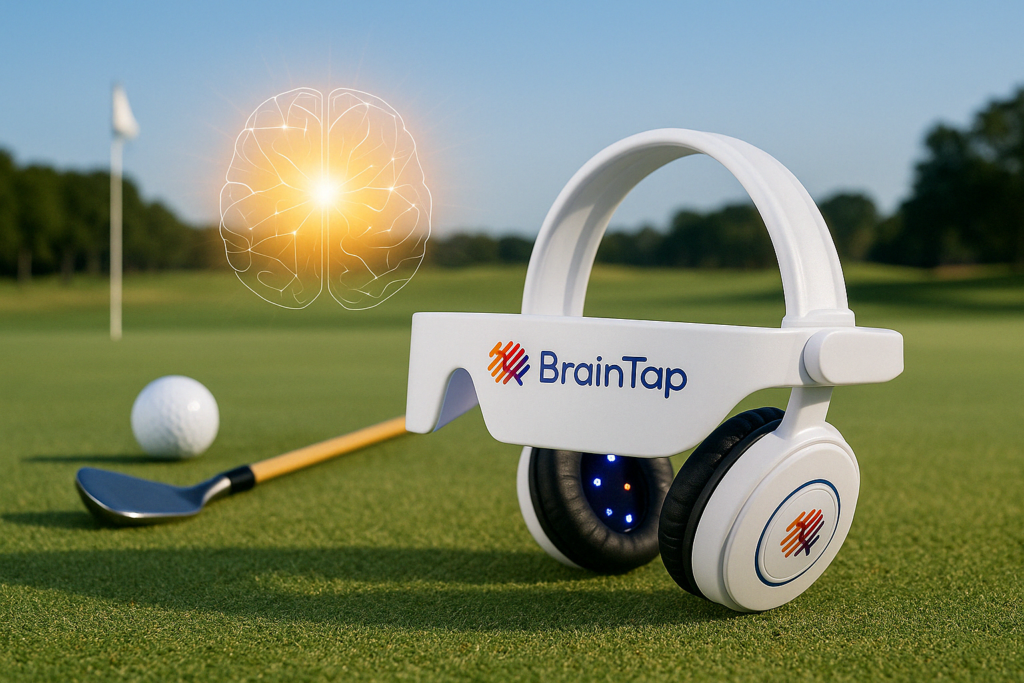Effect of Brainwave Entrainment and Transcranial Photobiomodulation on Brainwave Power of College Golf Players
Francisco Jose Cidral-Filho, Ph.D.1, Eber Fontes, Esp. 2, Patrick Porter, Ph.D.2, Geraldine
Perez, Ph.D.3
1. Laboratory of Experimental Neurosciences (LaNEX), University of Southern Santa Catarina, SC, Brazil.
2. Physical therapy Program. University of Ribeirao Preto, SP, Brazil.
3. Postgraduate Program in Integrative Medicine. Quantum University. Honolulu, HI, USA.
4. Disability Support Services. Seminole State College of Florida. Sanford/Lake Mary Campus. Sanford, FL, USA.
Background
Transcranial photobiomodulation (tPBM) is a novel form of neuromodulation, based on non-retinal exposure to light at specific wavelengths, mainly in the red or near-infrared range. tPBM has been shown to improve memory, attention, and induce sleep regulation. Brainwave entrainment (BWE) refers to the use of rhythmic stimuli with the intention of producing a frequency-following response of brainwaves to match the frequency of the stimuli. The stimulus is usually either visual (flashing lights) or auditory (pulsating tones). BWE has been shown to influence Brainwave power and significantly improve attention; as well as Reduce anxiety and stress. The combination of tPBM and BWE has not yet been studied.
Objective
Investigate the effect of Brainwave Entrainment and Transcranial Photobiomodulation on Brainwave Power of College Golf Players.
Methods
Trial was pre-approved by Seminole State College Internal Review Board. Participants were screened and asked to sign an Informed Consent Form. Sample size consisted of 8 adult female College Golf Athletes (Average of 18 years of age) with no hearing disabilities and no prior use of BWE or tPBM. Participants were randomly assigned by simple draw to either Group A or B. Group A underwent BWE sessions 2 times a week for the first 3 weeks, then tPBM 2 times a week for the next 3 weeks; Group B underwent tPBM for the first 3 weeks, then BWE for the next 3, totaling a 6-week intervention period.
BWE was delivered in 20-minute sessions with a BrainTap headset (New Bern, NC). BWE Sessions consisted of Binaural beats and Isochronic Tones varying from 18 to 0.5 HZ as well as visual Entrainment through light-emitting diode lights at 470 nanometers (nm) flickering at the same rate (18 to 0.5 HZ). tPBM was delivered in 10-minute sessions with a tPBM helmet composed of 660 nm (n=100) and 850nm (n=100) evenly distributed. Total irradiance delivered per session was 1000 mW/cm2 per minute. Evaluation of total brainwave power was conducted with the Emotiv Epoc+ 14-Channel Wireless electroencephalogram (EEG) Headset (San Francisco, CA). EEG sessions were conducted at baseline and after 6 weeks and consisted of 2-minute eyes open immediately followed by 2-minute eyes closed readings. The average of the overall brainwave power of the 14 channels is reported.
Results
Two-tailed Paired T-test with 95% confidence interval (GraphPad software v.9, La Joula, CA) between baseline and end of study EEG evaluations demonstrated the following: decrease in Gamma (-46%, p<0.0098), Low Beta (-24.4%, p<0.1171), High Beta (-46%, p<0.0278), and Theta (-42%, p<0.3206); and an increase in Alpha (90%, p<0.0009).
Conclusion
The interventions used herein induced statistically significant changes in brainwave activity of College Golf Players. To the best of our knowledge this is the first report to demonstrate the combined effects of BWE and tPBM upon brainwave activity.
Figures

Figure 1 – The effect of Brainwave Entrainment and Transcranial Photobiomodulation on Brainwave Power of College Golf Players. NS = Not statistically significant. *p<0.05 (paired T-Test 95% with a confidence interval – Graphpad Prism software, USA).
Study #7 – Accepted to be presented at the International Congress on Integrative
Medicine and Health in Phoenix, AZ, May 2022 (ICIMH-2022).
